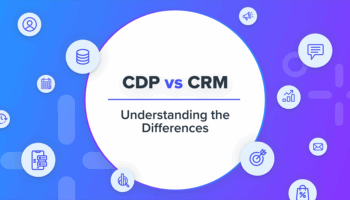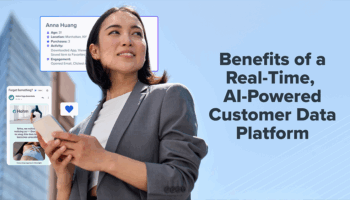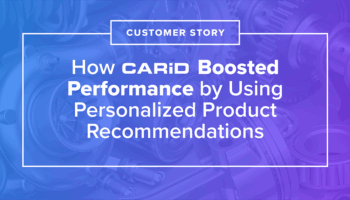Integrating Customer Data Platforms (CDPs) with Customer Engagement Platforms (CEPs) creates a powerful combo for businesses aiming to enhance customer interaction and streamline marketing processes. The benefits of a Customer Data Platform are evident from the start, as it brings together customer data from all corners, creating a full view of each customer. Meanwhile, our CEP uses this unified data to engage customers with personalized marketing.
TL;DR:
Combining your Customer Data Platform (CDP) with your Customer Engagement Platform (CEP) creates a unified system for insight and action. This integration allows you to better understand your customers and engage them with personalized, real-time experiences across every channel.
- Unifies customer data across systems to create complete, real-time profiles
- Enables personalized marketing at scale using AI and predictive insights
- Improves efficiency by reducing manual work and siloed execution
- Enhances customer journeys with consistent messaging across touchpoints
- Supports compliance and builds trust through centralized data governance
What Is the Difference Between CDP and CEP?
Understanding the distinction between a Customer Data Platform (CDP) and a Customer Engagement Platform (CEP) is key to unlocking their combined potential. While each plays a unique role in the MarTech stack, their true power lies in how they work together to drive personalized, data-informed engagement.
Customer Data Platform (CDP): Collects and unifies first-party customer data from multiple sources into a single, persistent profile. This core functionality highlights the many benefits of customer data platforms, providing a comprehensive view essential for modern marketing.
Customer Engagement Platform (CEP): Activates customer data for marketing by delivering personalized, real-time engagement across channels.
When integrated, CDPs and CEPs become a closed-loop system for both insights and action.
Key Benefits of an Integrated Customer Data Platform (CDP) and Customer Engagement Platform (CEP)
Integrating your CDP and CEP unlocks a wide range of benefits that go beyond data centralization. While the combined platform offers immense value, it’s crucial to understand the foundational customer data platform benefits that enable such powerful integration. This combination powers smarter decision-making, hyper-personalized marketing, and efficient execution—all of which translate to better customer experiences and higher ROI.
Unified Data Management
Bringing all your customer data into one place eliminates silos and provides a complete picture of each customer. This unified view is one of the primary benefits of a Customer Data Platform, allowing for better targeting and coordinated marketing across departments.
- Consolidates data from various sources, ensuring all customer information is in one place
- Creates a complete, 360-degree customer profile
- Breaks down silos between teams and systems
Personalized Marketing at Scale
With richer data at your fingertips, you can personalize content, offers, and messages across channels in real time. AI-powered personalization ensures every customer gets a relevant experience.
- With detailed customer profiles, you can tailor messages to match individual preferences
- Uses AI to power dynamic content, next-best actions, and product recommendations
- Delivers one-to-one personalization across email, mobile, web, and ads
Real-Time Insights and Campaign Optimization
Respond to customer behavior as it happens. Real-time analytics let marketers adapt quickly, making campaigns more effective and aligned with current customer needs.
- Get instant analytics to make quick, informed decisions
- Respond to customer behavior as it happens
- Align marketing tactics with up-to-the-minute insights
Seamless Customer Journeys
Deliver consistent experiences across every channel—email, web, mobile, and more. Integrated platforms help you coordinate messaging and timing to guide customers smoothly through their journey.
- Orchestrate consistent interactions across channels, ensuring a unified brand experience
- Coordinate messaging across touchpoints for a seamless experience
- Use historical and real-time data to drive relevance
Enhanced Marketing Efficiency
Integrated systems reduce friction in campaign execution. Automating repetitive tasks and managing everything from one place frees up your team to focus on strategy and creativity.
- Automate repetitive tasks, saving time and resources
- Manage campaigns and data in one unified platform
- Reduce redundancies and improve resource allocation with data-backed insights
Compliance and Trust
Centralizing data simplifies compliance by making data easier to govern, track, and secure across your organization. Integrated platforms provide better transparency and control over data, helping build trust with customers and regulators alike.
- Centralizes data governance and privacy management
- Supports GDPR, CCPA, and other regulations
- Builds trust through transparent and secure data handling
Why This Matters for Growth
Integrating these platforms helps organizations align customer understanding with execution. Instead of fragmented efforts across teams and systems, you gain a clear, coordinated strategy that turns data into action. This leads to more meaningful engagement, better customer loyalty, and measurable business growth.
An integrated CDP and CEP strengthens marketing execution and drives consistent business growth over time. You’ll:
- Increase repeat purchases through more relevant outreach
- Improve customer retention with personalized lifecycle journeys
- Boost ROI by targeting high-propensity segments with predictive AI
Customers with positive past experiences spend 140% more than those with negative ones.
Real-World Example : How AMN Healthcare Uses Integrated Data for Clinician Engagement
AMN Healthcare, a leading provider of healthcare staffing solutions, faced challenges with fragmented customer data that made it difficult to personalize outreach at scale. By leveraging Blueshift’s integrated CDP and CEP, they unified data from multiple sources, including past job searches, licensing renewals, and email engagement. This allowed them to segment clinicians by specialty, location preference, and job-seeking behavior, delivering real-time, personalized content via automated email journeys.
As a result, AMN Healthcare saw a 93% lift in engagement. Their marketing team was able to create highly targeted, relevant campaigns that matched each clinician’s unique profile and career path, ultimately improving conversion rates and deepening relationships.
Best Practices for Implementing CDP + CEP Integration
Implementing integrated platforms is an initiative that requires alignment across teams, clean data, and the right tools. These best practices will help ensure a smooth and effective rollout of your integrated CDP and CEP.
- Engage Key Stakeholders Early: Ensure marketing, IT, and data teams align on goals.
- Audit and Clean Your Data: High-quality data is essential for personalization.
- Choose a Scalable Platform: Pick a platform that supports your current needs and future growth.
- Invest in Training: Empower teams to use automation and analytics effectively.
- Monitor and Optimize: Continuously refine segments, journeys, and content with real-time feedback.
Learn How to Put This Into Action
You’ve seen the benefits, now it’s time to bring them to life. Whether you’re just starting or looking to enhance your current tech stack, Blueshift’s integrated platform gives you the power to unify data and orchestrate personalized experiences at scale. According to Blueshift’s survey of 290+ marketers, 86% of marketing leaders plan to invest in a Customer Engagement Platform over point solutions this year.
Blueshift helps you unify your customer data and activate it across every channel—all in one platform. From smarter segmentation to predictive AI and cross-channel orchestration, we give you the tools to deliver measurable results.
Ready to unlock the full potential of your marketing?
Request a demo and see how Blueshift’s integrated CDP + CEP can help you grow faster, connect deeper, and drive more revenue




